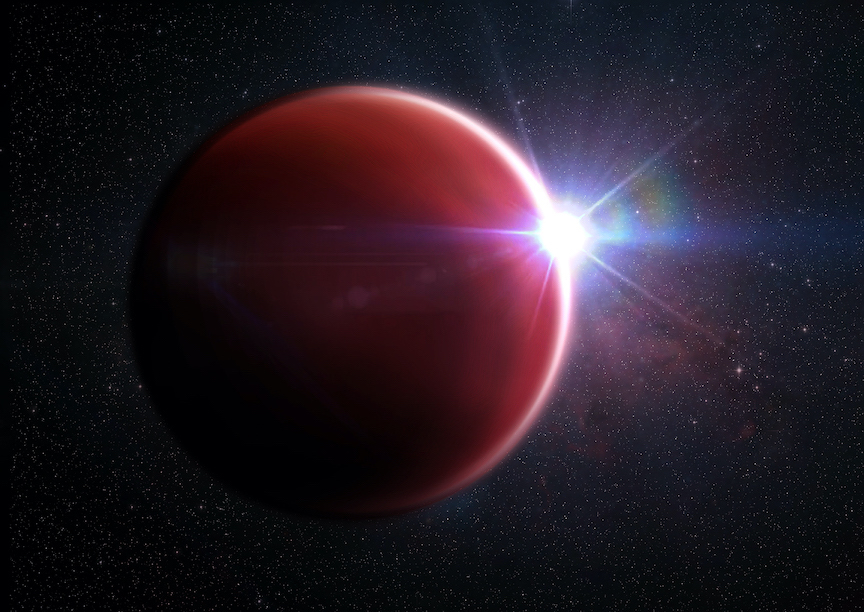
It doesn’t even take an entire planetary system to challenge our knowledge of planetary formation. Sometimes, all you need is a strange planet. In the case of our next story, that strange planet is WASP-62b, which was discovered back in 2012 but didn’t become graduate student Munazza Alam’s project until recently. Alam is doing her thesis on exoplanet characterization, so she looks at known exoplanets and analyzes their atmospheres.
Enter WASP-62b, a hot Jupiter about 575 light-years away and half the mass of our own Jupiter that only takes 4.5 days to orbit its star. It’s extremely hot as a result, and since we have an abundance of hot Jupiters in our exoplanet catalog, likely ignored for that reason as well. In fact, Alam said: I’ll admit that at first, I wasn’t too excited about this planet. But once I started to take a look at the data, I got excited.
The data were spectroscopic observations done with the Hubble Space Telescope, and they showed that sodium was present. Not only was it present, but the absorption lines were complete, meaning no clouds in the atmosphere were present to block the sodium signature. Since less than 7% of studied exoplanets have a clear atmosphere like WASP-62b, this result was surprising. Alam notes that the rarity “suggests something else is going on or they formed in a different way than most planets.”
Of course, with no clouds, we might be able to use JWST to study the composition of the planet itself, and that might help with our pesky planetary formation hypotheses.
More Information
Center for Astrophysics | Harvard & Smithsonian press release
“Evidence of a Clear Atmosphere for WASP-62b: The Only Known Transiting Gas Giant in the JWST Continuous Viewing Zone,” Munazza K. Alam et al., 2021 January 11, The Astrophysical Journal Letters




 Join the Crew!
Join the Crew!
 Escape Velocity Space News
Escape Velocity Space News
0 Comments